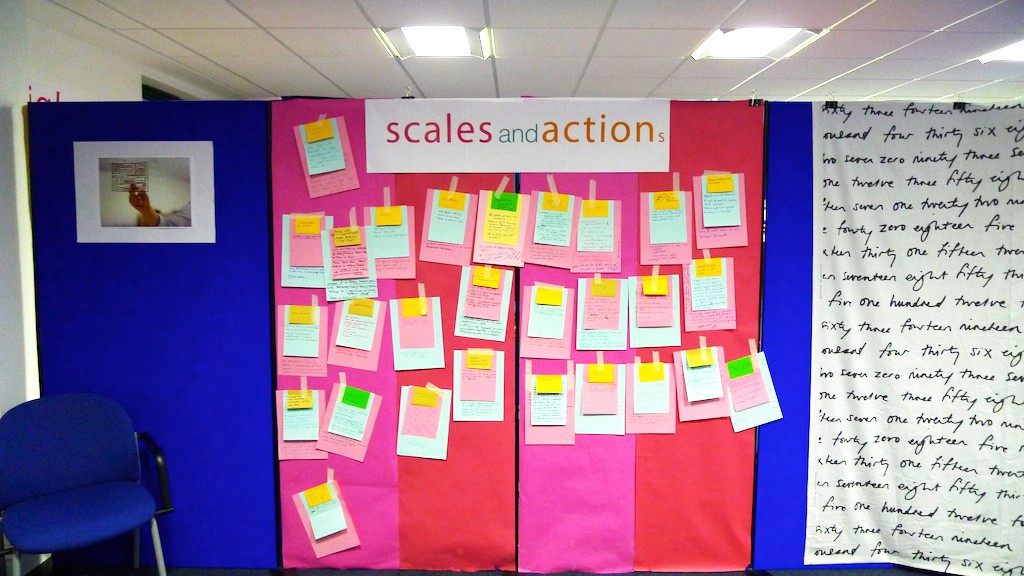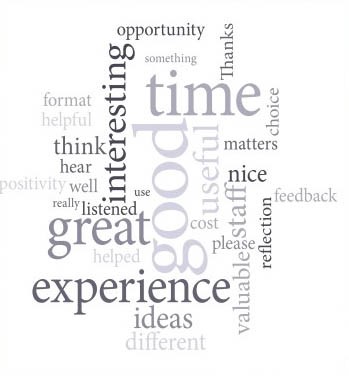Time and Spaces – Solution Focus in Practice
by Steve Creffield
Jun 28, 2021
Steve-Creffield and Kat-Barclay

Review by Dr. Kat Barclay
This article by Steve Creffield is a great story about how Brighton & Hove Integrated Care Service addressed challenges in their local health economy by expanding prior experiences with SF. Leaders and staff developed 5 dynamic aspirations to help guide the way forward for BICS. The use of ‘spaces’ for focus group conversations is presented as a valuable approach to help capture ideas and simplify a complex situation into themes of priority. BICS has now grown as an innovative organisation providing great impact on health care – an interesting example for other organisations of how the use of SF can make a difference.
Kat Barclay
Kat@BlueCoralCoachingSolutions.com bluecoralcoachingsolutions.com/
How do you give over 100 people a voice over their future when they are incredibly busy, have so little time and are under constant pressure to deliver?
Brighton & Hove Integrated Care Service (now ‘Here’) were at a tipping point in 2012. The organisation had grown to 70 employees and new ways of doing things were being challenged at every turn, not least by other NHS organisations and individuals in the local health economy. The whole system felt stressed and they wanted to find a way forward.
The leadership team sought a way to consult with everyone, internal employees and external partners (including patients) on how to best manage these challenges, in fact, to get clear on what challenges needed prioritising and managing. The article finishes with a client assessment in 2017, an excellent example of tracking results over time.
FIVE ASPIRATIONS:

1 - To understand the development needs of the staff within the different parts of the organisation, in the different levels from top to bottom.
2 - To elect the patterns and the themes that we need to collectively pay attention to within the organisation, particularly those that are felt to affect our personal and organisational effectiveness.
3 - To shine a light on the system, structure, processes and relationships within the organisation and outside of it that would help us identify what is empowering and working well and what needs amplifying.
4 - To have an enjoyable and enriching experience.
5 - To develop deeper trust, respect and shared purpose within the whole organisation.

Solution Focused working had been introduced to BICS a year earlier when we hosted a Solution Focus in Practice forum every month for the whole year. These highly dynamic 2hr sessions focused on working through real-world, of the moment, organisational challenges. These sessions had been a great success and Solution Focused thinking and approaches had taken hold in the organisation.
One of the things ‘already working’ was BICS had a group of people committed to the development of the organisation. We came together to build a Platform of Understanding and a Future Perfect. It was during initial conversations we became aware that the floor above their offices had been recently vacated – how about we use this? How about dividing it into ‘spaces’ where conversations could take place? How about we invite people to walk through these spaces and for each space to have a singular (Solution) focus?
It was agreed and was given the working title:
time and spaces – a process to give you the time and space to reflect upon what matters
A map was created with 6 Spaces and each Space was given a focus/question.
Time and Spaces: titles and questions
Please click on each of Spaces 2 – 6 to watch a video introduction to that space, or scroll down to view all videos on screen.
Space 1 - Welcome - What is Time and Spaces? Space 2 - Future and Concerns - What are your concerns and what are the critical challenges ahead? Space 3 - Critical Areas - So, in what areas does BICS need to excel? Space 4 - Assessment and Appreciation - How are BICS already performing in those areas, what is already working? Space 5 - Scales and Actions - What are the smallest possible things BICS could do to lift your score in those key areas? Space 6 - Bright-spot - When over the past 12 months have you had a ‘bright spot moment’ when you saw the real value of BICS in action?

We wanted to foster an atmosphere of creative engagement so each space was colour coded, divided off (with movable pin-boards), and each space had all it needed to host a conversation: refreshments, chairs to sit if you wanted, copious amounts of post-its, pens, paper, we even had one of the team (in their spare time) create Time & Spaces cushions for the welcome and orientation.
As the spaces were being created we drew up posters, invitations and joining instructions that primed everyone to the purpose, focus and process. We wanted everyone to arrive ready and already engaged in the process.
We then began testing and experimenting with the process with small focus groups, we varied the size, tested the questions and timed the process.
We found that groups of 6 worked best with 1 facilitator. This size of group allowed for maximum stimulation and contribution; smaller groups seemed less dynamic with fewer moments of sparking off each other and larger groups allowed people to sit out.
We also found ‘framing’ to be vital in the Welcome Space. This is where we shared the map, the process and invited people to become aware of their group – who was in it, the different perspectives that were likely to exist and how important it would be to hear them, share your own and be open to any differences.
It also worked well for the facilitator to capture contributions on Post-it Notes in some of the spaces (Space Two for example), whereas in others it was more natural for the participants to capture on Post-its (Space 4).
At times the facilitator would ask for guidance in terms of clustering and drawing out themes and in other spaces the participants were invited to do this. Either way the facilitation involved posing the question and then following whatever happened. Sometimes this would involve probing into their responses, or inviting them to distil their thoughts down onto a Post-it. It was a little like weaving and over the two days each space became a rich tapestry of insights and perspectives.

Just ONE HOUR!
We discovered during the testing (and in practice) that we could get a group of 6 through the process in just over an hour. So, we set up a booking process that reflected this. The booking process allowed us to ensure that we had multiple stakeholders in every group which in turn added to the richness of the conversations that followed.
Time & Spaces went live on the 11th & 12th January 2012. We had two facilitators from our company “evolve” working throughout and 14 groups (86 people) came through the Time and Spaces consultation process.
The day after we completed I went back in to photograph and capture what had been created on those two days. I also made some video summaries in each of the spaces, here is the link to them – please start at BICS movie 2.
Time and Spaces

Time and Spaces enabled nearly 100 people to fully engage in conversation, with minimum disruption to their working lives; it provided the whole organisation (and its primary stakeholders) with a sense of shared direction and priority.
The comments from the check-out wall created this Word Cloud. The event was seen extremely positively. The director of operations shared in an email immediately after the event:
‘I was struck by the simplicity of the key themes, and how much they resonated with my own experience of the work I do here.’
What Time and Spaces had achieved was to simplify a great deal of complexity and points of view down into some clear themes of priority where energy, time and resource could be directed and invested.
2017: FOUR YEARS ON
Every year we have tracked the impact of Time and Spaces and as you would imagine things have evolved. Here is what the Director wrote in 2017:
“It was a great process for us at the time and set the way we worked going forward… The thing that resonated deeply with me was the bright spots…in many ways the articulation of these are still very much present for us today in our purpose, beliefs and commitments.
When we held Time and Spaces, we were a small Brighton and Hove focussed organisation employing 70 staff. Today we cover most of Sussex, and have national impact with some of our services and products, we employ 200 people and work with another 300 clinicians.
The focus has shifted from these very internally focussed issues, that were necessary to get the organisation established and delivered to one that has more of a system wide impact.”
“BICS” has now become “Here” and it’s one of the most innovative and dynamic organisations I know. They are now working, on a much larger scale, in self-managed teams, and are having a great impact upon the way people experience care – they look to ‘bring care in every moment.’ www.hereweare.org.uk.
About the Author
The author Steve Creffield ( www.evolveintegral.com) facilitated Time and Spaces with Susan Littleford.
Steve’s Solution Focused work has been very much focused on developing individuals and teams in the workplace and taking a Solution Focused approach to international development projects. He has hosted solution focused workshop in Ethiopia, Sudan, Yemen, Dubai, and many more countries and with all sorts of groups including the UN, The World Food Program and a wide range of development organisations like The Palladium Group. He first came across Solution Focus in 1994/5 on his NLP Practitioner training, and has gone on to explore Positive Deviance and he trained with Mark McKergow and qualified as a an SF Business Practitioner in 2012.
The main workshops that he hosts are:
- Solution Focus in Practice > an introduction to the principles and practical applications of SF
- Solution Focus with Others > how to host solution focused conversations in groups
- Solution Focus Coaching > how to use the OSKAR process to guide the development of others
- Solution Focus in Development > how to use SF to guide international development projects